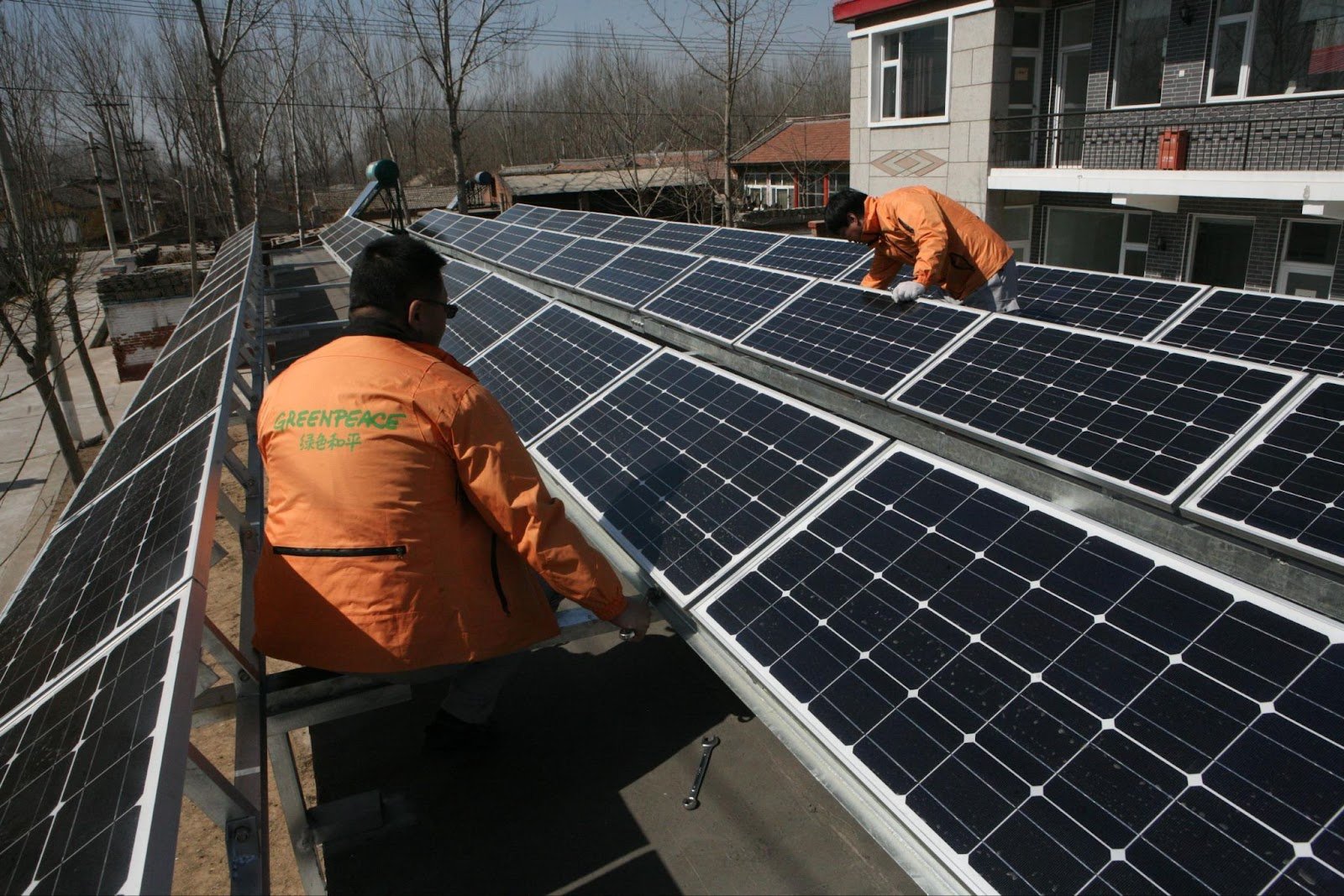“These statistics show that China is on track to far surpass its Paris climate targets, which is great news for everyone.”
“However, the trend is not moving as fast as it could. The introduction of a national coal consumption cap in the upcoming 13th Five Year Plan would quicken the pace of CO2’s decline, as well as help to bring clean and healthy air to the citizens of China,” said senior global campaigner on coal, Lauri Myllyvirta.
2015 saw CO2 emissions fall by 1-2% following a slight fall in 2014, according to Greenpeace analysis of the numbers. Key to this fall were a 2-4% decline in coal consumption and 5.3% fall in cement output, in part caused by a contraction in heavy industry such as steel and concrete.
At the same time, China’s wind and solar generating capacity broke records this year growing by a stunning 34% and 74% respectively, allowing growth in wind and solar power generation alone to meet the whole year’s electricity demand growth for the first time in history.
Similarly, increase in non-fossil energy was equal to growth in total energy use for the first time on record.
However, a steadily worsening overcapacity problem in coal power and heavy industry threatens to complicate the transition to renewable energy sources. [1]
Greenpeace East Asia calls on the Chinese government to quicken the pace of change by addressing the overcapacity issue and introducing a national coal consumption cap in the 13th Five Year Plan.
[1] A Greenpeace East Asia report published November 2015 revealed the extent of the overcapacity problem in the coal fired power sector in the first three quarters of 2015. The report can be read here. It will be updated with whole year statistics on Wednesday 2 March 2016.
Notes to editors:
See key statistics from the release here.
Media contact:
Tom Baxter
International Communications Officer, Greenpeace East Asia
email: [email protected]
phone: +86 188 1134 4861
Greenpeace International Press Desk
Email: [email protected]
phone: +31 (0) 20 718 2470 (available 24 hours)



